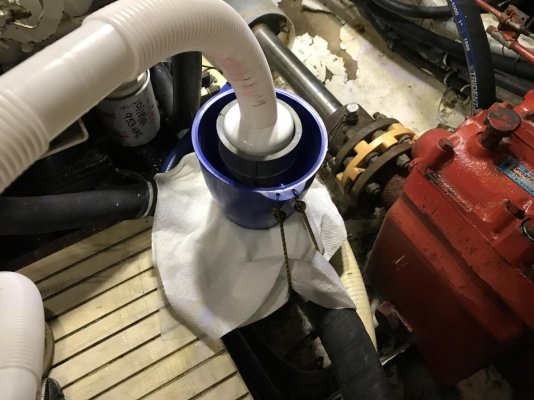WINTERIZING PLUMBING
The Fresh Water System
[FONT="]1. Drain the water tanks completely (just turn on all the faucets).[/FONT]
[FONT="] 2.Drain water heater. Most have a drain petcock; follow manufacturer’s instructions to find it and use it. Remove both the inlet and outlet hoses, and if necessary use a shop vac to be sure of getting all the water out of it.[/FONT]
[FONT="]--The antifreeze method[/FONT]
3. Do NOT put antifreeze in the water heater. Connect water heater inlet and outlet hoses together to bypass it. Bypass kits for this purpose are available from boat stores and RV supply stores.
[FONT="] Why drain the water heater and bypass it instead putting antifreeze into it? Why Because you’d need as many gallons as the water heater tank holds—which would cost a fortune!--and it takes forever to flush that much out of it in the spring![/FONT]
[FONT="]Add non-toxic antifreeze ("the pink stuff") and pump that through the system until all outlets--hot and cold in the galley, head, shower, and any deck wash--run only antifreeze. Leave all the faucets open to make sure there is no pressure in the system. [/FONT]
[FONT="]No antifreeze “dry” method: [/FONT]
[FONT="]1. Follow the first three steps listed above. [/FONT]
[FONT="]2. Using an air compressor, blow ALL the air out of ALL the plumbing, disconnecting it where necessary to achieve this. The first time you opt for this method can be difficult and labor intensive, but if connections are reassembled in the spring using quick-connect fittings, it becomes a lot easier in the future.[/FONT]
[FONT="]
[/FONT][FONT="][FONT="]SANITATION SYSTEM[/FONT]
[FONT="]The sanitation system is the easy job:[/FONT]
[FONT="]Pump holding tank out, then rinse thoroughly to flush out any sludge. This does not require filling the tank and can even be done with sea water. Here’s how: [/FONT]
[FONT="]Put enough water into the tank via the deck pumpout fitting—because that sends the water into the tank at the bottom to stir up any sludge and hold it in suspension so it can be flushed out-- to cover the bottom to a depth of at least three inches. Pump that out. Repeat…repeat…repeat…till you’re pumping out clean water. Then add water one more time and turn on the macerator to rinse it out along with the overboard discharge plumbing. [/FONT]
[FONT="]Alternatively, you can use a washdown pump to do the whole job. Stick the nozzle into the deck pumpout out fitting and turn on the water. When the depth reaches a couple of inches, leave the water running and turn on the macerator Let both run till the water runs clean (it may be best to do this offshore outside the “3 mile limit”).[/FONT]
[FONT="]By the way, this should be done at least 2-3x a season, more often if live aboard or use your boat year round.[/FONT]
[FONT="]Now you’re ready to winterize the system. [/FONT]
[/FONT]
[FONT="]Sea water toilet, manual or electric: Just flushing antifreeze through the bowl will not protect the intake line, the toilet pump or the bowl...it'll only go out the discharge to the tank. To protect the whole system, it's necessary to close the toilet intake through-hull, disconnect inlet hose and stick it in a gallon of non-toxic ("the pink stuff") antifreeze. Pump the whole gallon through the system into the holding tank. Do not reconnect head intake hose to the through-hull. [/FONT]
[FONT="]
[FONT="]If your toilet inlet line is teed into the head sink drain line, you can add the antifreeze by just pouring it down the sink--after you've closed the drain seacock, of course! [/FONT][FONT="]Pump the head or hold the button down long enough to get as much of the excess fluid out of the system as possible.[/FONT]
[FONT="]Fresh water toilet[/FONT][FONT="]: If your toilet uses onboard pr[/FONT][FONT="]essurized fresh water, you winterized it when you winterized your fresh water system. All that remains is, flush the appropriate amount of non-toxic antifreeze ("the pink stuff") down the toilet into the tank and you’re done.[/FONT]
Do not use antifreeze in an ElectroScan, Lectra/San, PuraSan, or any other Type I or Type II MSD. Follow manufacturers instructions to winterize all Type I and II MSDs.
[FONT="]After the boat comes out of the water, open all the sea cocks to drain any trapped water.[/FONT]
[/FONT][FONT="] [FONT="]And you’re done.[/FONT][/FONT]
[FONT="][FONT="]--Peggie
[/FONT][/FONT]


